7 Best Thermal Scopes of 2025: [UPDATED]
Looking for the ultimate advantage in the dark? The best thermal scopes can easily tip the odds of any night hunt in your favor, probably the reason they are banned from many game hunts. However, for varmint hunting, their usefulness is unparalleled.
That said, thermal optics are very expensive and there’s a multitude of categories them out there with dramatic differences in cost. That’s why I’ve put together an article catering to different users with a variety of purposes and price points. Let’s get right into it
What’s a Thermal Scope?

Let’s not get too far ahead of what we are talking about. A thermal scope is a device that attaches to a weapon and allows you to aim while viewing the thermal signature of a target. Thermal optics are not like traditional optics. They are essentially cameras that provide a thermal image to you. Heck, even calling it a camera isn’t accurate. It’s more or less a sensor and is different from a night vision scope.
Thermal scopes don’t just detect heat. That would create a crazy spectrum since everything has a little heat to it. What they really do is detect differences in heat and display them as various colors and contrasts. Thermal scopes can be used during the day and at night to provide a detection device unlike any other.
How I chose the best thermal scopes
Over the years, I had the chance to get my hands on a wide range of thermal scopes, some sent over by companies for review, others I had the pleasure of testing out in the field at various events. This experience wasn’t just about playing with the latest tech; it was about really getting to know what made a thermal scope worth the investment.
When I evaluated these scopes, it wasn’t just about the specs on paper. Sure, I dug into the technical details, but what really mattered was how they performed when it counted. I took a close look at image clarity, resolution, and durability because when you were out in the field, those things could make or break your experience.
I also knew that not everyone had the same budget or shooting style, so I made sure to include a variety of options. Whether you were a weekend hunter or a serious shooter, the scopes I chose weren’t just high-priced gadgets; they were tools that offered real value for their price. It was about finding the right one that fit your needs and delivered where it mattered most.
Why You Want One
Thermal scopes can be used for a variety of purposes. Most civilian use revolves around hunting non-game animals at night. Hunting at night is often forbidden for game animals like deer, but for nuisance animals, like wild hogs, it’s often legal to hunt them anytime. Of course, check your state and local laws first.
At night these optics make it very easy to spot animals. They literally glow against a thermal scope, and with the right thermal scope, you’ll be able to tell their size, shape, and what exactly they are before you pull the trigger. Positive identification is pretty dang important, and if you don’t know exactly what you are shooting at, you are in the wrong.
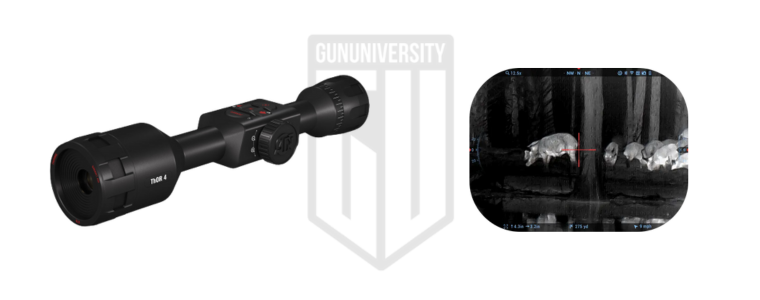
Besides hunting, thermal optics can be useful for range defense. If you have livestock, chickens, or other animals that often fall prey to nightly predators, then a thermal optic can even the odds. Killing coyotes and similar animals in the middle of the night has never been easier.
At the same time, these thermal optics work well for security purposes. Being able to observe and report on intruders while remaining armed can be valuable. If the threat is outside and trying to come in, a thermal optic can make it easy to see, although white light PID needs to be made before firing a shot.
Thermal scopes are just handy and, honestly, a lot of fun. I prefer a thermal scope over other thermal optics due to their multi-use nature. I often use my own thermal scope to just watch animals in the ‘back 40’ part of my property. Watching rabbits, deer, and similar animals can be interesting even if I’m not hunting them. You haven’t lived till you’ve seen an owl take a rabbit in the evening under thermal vision.
List of the Top Thermal Scopes
Okay, so now that we understand a bit about the thermal scopes, their types and benefits, let’s go ahead and start looking at my personal list of recommended thermal scopes.
Best Thermal Scopes
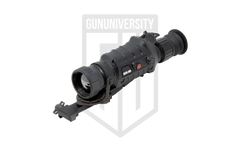 |
| Check Price | |
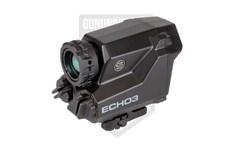 |
| Check Price | |
| Check Price | ||
 |
| Check Price | |
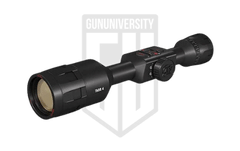 |
| Check Price | |
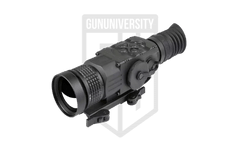 |
| Check Price | |
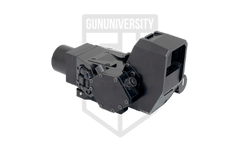 |
| Check Price |
Thermal Scope Specifications
Below is a list of our Best Thermal Scopes. So we can compare, we lined up the specs from each of the best thermal scopes below and help you make the best decision possible.
| Scope | Magnification | Resolution | Weight | Length |
|---|---|---|---|---|
| Burris Thermal Riflescope | 2.3X or 3.3X | 400x300 | 23.2 to 25.4 ounces | 9.8 inches |
| SIG Echo3 | 1-6X or 2-12X | 320x240 | 14.3 ounces | 4.3 inches |
| Trijicon REAP-IR | 1.2X | 640x480 | 24.7 ounces | 8.4 inches |
| Thermion XP50 | 2X | 640x480 | 31.74 ounces | 12.4 inches |
| ATN Thor 4 384 | 4.5X | 384x288 | 35.2 ounces | 13.8 inches |
| AGM Python TS50-640 | 2X | 640x512 | 28.8 ounces | 8.9 inches |
| Steiner Close Quarter's Thermal | 1X | 320x240 | 13.7 oz | 5.2 inches |
Best Thermal Scopes
Thermal Scopes are expensive. That’s why it’s important to know which ones are worth the extra cost. Because of this, here is the list of thermal scopes I recommend and in which order.
- Burris Thermal Riflescope
- SIG Echo3
- Trijicon REAP-IR
- Thermion XP50
- ATN Thor 4 384
- AGM Python TS50-640
- Steiner Close Quarter’s Thermal Sight
Reviews of the Listed Thermal Scopes
Now we’ve had a brief overview of our top picks, let us take the time to individually review each item. In this section we’ll be revisiting our specs, speaking about the product, and looking at the pros and cons.
1. Burris Thermal Riflescope
Burris Thermal Riflescope
The Burris BTS Thermal Riflescope is the perfect addition to any nighttime shooting set up, be it tactical or hunting. It features a 4 power zoom and 5 different color pallets to help track your target’s heat signature in a wide range of weather conditions.
Burris Thermal Specs
- Magnification 1X
- Resolution 400×300
- Weight 23.2 to 25.4 oz
- Length 9.8 inches
Burris Thermal Riflescope Review
Ah, the Burris Thermal Riflescope – my top pick among the best thermal scopes out there. What sets this one apart? Well, first off, its close ties with Steiner, sharing that DNA in quality and affordability. The BTS series offers both a 35mm and 50mm variant, packing in a range of magnifications. I’m talking 2.3X with a digital zoom up to 9.2X for the BTS-35, and a sweet 3.3X with a whopping 13.2X zoom for the BTS-50.
Now, the resolution might not blow your mind at 400×300, but trust me, for the price, it’s a solid deal. That 50 Hz refresh rate? That’s your ticket to a clear view, perfect for hunting all sorts of critters, from deer to coyotes and hogs. And those color palettes? They’ve got all the options—black and white-hot, red hot, and more—to suit your style.
What really seals the deal for me is the Hot Track feature with the thermal sensor. It’s like magic, locking onto the hottest thing in your sight and sticking with it. Plus, the warranty? Top-notch. Now, it’s not the featherweight champ, but considering its features and price, I can live with that. Most times, when you’re out with a thermal scope, you’re not hiking marathons, right?
Sure, it might not be the absolute pinnacle, but for the price point, it’s a game-changer among rifle mounted thermal scopes. Trust me, for what you get at this range, this is the best thermal scope, hands down.
Burris Thermal Riflescope Pros and Cons
- Hot Track Feature
- Affordable Price Point
- Awesome Resolution and Refresh Rate
- Somewhat Heavy
Burris Thermal Scope Deals
-
$2,099.00
-
$2,999.00
-
$2,699.00
2. SIG Echo3
SIG Echo3
The most innovative, direct view thermal sight in the world. The ECHO3 uses SIG SAUER® BDX® technology and can record both video and images in 11 different color palettes.
SIG Echo3
- Magnification 1-6X or 2-12X
- Resolution 320×240
- Weight 14.3 oz
- Length 4.3 inches
SIG Echo3 Review
SIG Echo3 caught my eye for a few reasons, earning its spot as my second choice among the best thermal scopes.
The Echo3’s design is intriguing. It almost feels like a close-range reflexive optic, especially with the 1-6X variant. There’s also a 2-12X variant if you’re into a bit more magnification, but I feel the smaller design fits this scope better, especially with its 320×240 resolution and 30Hz refresh rate that does a great job of detecting heat signatures.
SIG gives you options—like a wide variety of color palettes, including a Predator impression that’s seriously impressive. You can also record videos and take pictures, adding a fun element to observing wildlife or documenting your hunts. The MOTAC motion-controlled battery monitoring is a smart addition, helping conserve battery life by powering down when idle and instantly powering up when in use.
Now, battery-wise, it runs on two CR123 batteries, lasting about six hours with normal use. But here’s what sets it apart—a big open screen. Instead of being stuck looking solely through the scope, you maintain your situational awareness while using the optic. It’s a big plus for on-the-fly situations.
However, while it’s a neat design and super light, it doesn’t quite match the quality of the Burris for me, especially at a similar price point. Maybe if the cost were lower, it could easily slide into my first-place recommendation.
SIG Echo3 Pros and Cons
- Open Design
- Minimalist Design
- MOTAC Tech
- Not Great for Magnified Use
SIG Echo3 Deals
-
$2,399.99
-
$2,399.99
-
$2,699.99
-
$2,999.99
3. Trijicon REAP-IR
Trijicon REAP-IR
Trijicon’s REAP-IR delivers powerful thermal imaging in a compact, easy to use package. The core of the system is the advanced 12 micron thermal image sensor that provides superior image quality in virtually any lighting condition.
Trijicon REAP-IR Specs
- Magnification 1.2X
- Resolution 640×480
- Weight 24.7 oz
- Length 8.4 inches
Trijicon REAP-IR Review
Trijicon has always impressed me with their optics—ACOG, RMR, Acupoint—each a winner. The revelation that they make a thermal sight, the REAP-IR, took me by surprise, but after some quality time with it, I’m sold. The REAP-IR, sporting a catchy name, is a compact thermal optic featuring an efficient 12-micron sensor and a surprisingly clear 640×480 resolution in its small lens.
I opted for the smallest variant with a 24mm objective lens, offering 1.2X base magnification and an 8X digital magnification, totaling 9.6X at its peak. What sets this apart is the adjustable refresh rate—switching smoothly between 30Hz and 60Hz. Trijicon’s array of reticles, including MRAD and MOA models along with BDCs for various calibers, is impressive.
The controls, designed as a thumbstick, are a delight to use, a significant departure from the traditional wheel design. The quick detach mount is a thoughtful touch. However, my gripe lies in its short battery life, not quite matching up to the Sig mentioned earlier. And yes, it’s the priciest in my lineup, but the REAP-IR rightfully claims the title of the best premium thermal scope on the market.
Trijicon REAP-IR Pros and Cons
- Adjustable Refresh Rate
- Awesome Resolution
- Efficient Size and Weight
- Short Battery Life
Trijicon REAP-IR Deals
-
$5,399.93
-
$5,407.00
-
$6,129.99
-
$7,209.99
4. Thermion XP50
Thermion XP50
Pulsar’s Thermion 2 XP50 Thermal Imaging Riflescope delivers superior thermal imaging in virtually any environmental conditions.
Thermion XP50 Specs
- Magnification 2X
- Resolution 640×480
- Weight 31.74 oz
- Length 12.4 inches
Thermion XP50 Review
The Pulsar Thermion XP50 strikes a balance between traditional scope design and top-tier thermal capabilities. With a wide 50mm objective lens, it’s not the most compact, but its 640×480 sensor delivers an exceptional sight picture. The detection range of 1800 meters makes it a dream for hunters and shooters. Despite digital zoom affecting resolution, the high quality ensures a clear picture.
I love the picture-in-picture display feature as it is perfect for precise shot placement. It’s a rugged, IPX7-rated scope, ready to handle recoil without breaking a sweat. It allows for five zeroing profiles for different rifles or loads, but it’s not the most budget-friendly. For thermal hunting, though, the Thermion XP50 might just be the best thermal optic out there.
The only caveat? It’s heavy, so consider that if weight is a concern. However, if you’re after traditional scope design and exceptional image-in-image quality, this one’s a winner.
Thermion XP50 Pros and Cons
- Awesome Clarity
- Picture In Picture Is Amazing
- Traditional Scope Design
- It’s a hefty optic
Thermion XP50 Deals
-
$4,843.00
-
$4,999.97
-
$4,699.00
5. ATN Thor 4 384
ATN Thor 4 384
ATN Thor 4 384 is designed to withstand the pressures of High Caliber weapons. Turn on RAV and let the ThOR record directly to your SD card. 1st ever digital scope with over 16hrs of continuous battery power. The ThOR 4 is built out of Hardened Aluminum Alloy with Impact Resistant Electronics.
ATN Thor 4 384 Specs
- Magnification 4.5X
- Resolution 384×288
- Weight 35.2 oz
- Length 13.8 inches
ATN Thor 4 384 Review
The ATN Thor 4 384 opened my world to civilian thermal optics. Balancing affordability, clarity, and magnification, its 4.5X base magnification suits brush hunting. Yet, at 18X, the resolution takes a hit. While hefty, its feature-packed design compensates.
Its 384×288 resolution and 60Hz refresh rate create detailed views of rabbits at 50 yards. With a range of features like picture and video capabilities, color pattern choices, and multiple reticles, it’s versatile. A beta test for tracking other hunters adds uniqueness.
But why isn’t it ranked higher? Well, it’s heavy for its capability and pricier than the Burris, which is also stellar. It’s a solid option, but the Burris or Sig might serve better.
ATN Thor 4 384 Pros and Cons
- Awesome Price Point
- Tons of Features
- Great Refresh Rate
- Heavy and Long
ATN Thor 4 384 Deals
-
$2,175.00
-
$2,449.00
-
$2,698.99
-
$2,149.00
-
$2,549.00
6. AGM Python TS50-640
AGM Python TS50-640
This long wave infrared, uncooled, thermal imaging weapon sight combines easy to use, ergonomic controls with the latest in thermal imaging technology
AGM Python TS50-640 Specs
- Magnification 2X
- Resolution 640×512
- Weight 28.8 oz
- Length 8.9 inches
AGM Python TS50-640 Review
You know, the AGM Python TS50-640 is a bit of a beast. Seriously, that 640×512 resolution coupled with a 2X built-in magnification? It’s like looking through a crystal-clear window, especially with that quick 30 Hz refresh rate. Trust me, tracking critters with this thing is a breeze!
And the zoom? Oh yeah, it goes up to 8X, and the imaging palettes are insane—white/black hot, rainbow, and a bunch more. I’ve used it for hunting, and it’s on point for IDing targets, whether it’s a pesky coyote or something else.
But, here’s the kicker—the battery life. It’s not the longest. Like, you might want to pack an external power source if you’re heading out for a while. On the upside, it’s tough as nails and got this slick QD mount.
Ranked sixth in my book because of its stellar clarity and imaging prowess, it’s a solid pick for hunting or security gigs.
AGM Python TS50-640 Pros and Cons
- Super Clear Sight Picture
- Good Refresh Rate
- Compact Design
- Low battery life
AGM Python TS50-640 Deals
-
$2,999.00
-
$3,439.00
-
$3,636.99
-
$3,594.67
7. Steiner Close Quarter’s Thermal Sight
Steiner Close Quarter’s Thermal Sight
The Close Quarters Thermal (CQT) is a see-through thermal sight that overlays onto a direct view of the real world. Designed for soldiers to use in close quarter combat, the CQT is the next gen for predator hunters.
Steiner Close Quarter’s Specs
- Magnification 1X
- Resolution 320×240
- Weight 13.7 oz
- Length 5.2 inches
Steiner Close Quarter’s Review
I first handled the Steiner Close Quarter’s Thermal Sight at SHOT Show a few years ago, and it’s what got me into the world of thermal sights. The Close Quarter’s Thermal Sight is actually a red dot weapon sight with a thermal overlay that provides a standard clear image with a see-through thermal image overlay. Hot stuff glows green with a normal sight picture.
The optic has two modes. The first is the outline mode I described above. When the sun goes down, you can use full thermal to find the picture. Heck, you can just turn the thermal mode off and use it as a red dot if you so choose. Steiner includes multiple reticles, easy-to-use controls, and a heads-up display. It’s also super tough and waterproof for total submersion for up to two hours. This is a duty grade optic for police, military, and of course, the everyday Joe.
The CQTS is a 1X red dot sight but can work with flip-up magnifiers. Still, for close-range use, the CQTS is an absolute game-changer. No longer do we need a massive optic to use thermal vision. The Steiner changes the game and shrinks optics to a crazy low level. It’s very easy to use, rugged, reliable and would be an awesome tool for home defense and short-range hunting. Pop in a magnifier, and you get true magnification without resolution reduction.
Steiner Close Quarter’s Pros and Cons
- Super Small and Lightweight
- Perfect for Close Range Use
- Multiple Modes for day and night-time use.
- It Cost 10K
Steiner Close Quarter’s Deals
-
$7,899.99
-
$7,899.99
-
$9,999.99
All About Thermals – Buyers Guide
When it comes to buying a thermal scope, there are a lot of things you should know. I’ve created this buyer’s guide to help take you to the next level and better understand some of the most important aspects of picking a thermal scope so that you are better prepared.
I won’t be covering the science of thermals or how they work, so, if you would like to learn more about that, you can check this out.
To get started, let’s first look at the different types of thermal optics on the market.
Types of Thermal Optics
There are various thermal optics out there on the market: , Clip-on devices, and handheld thermal monocular devices.
- Thermal scopes – Thermal scopes are made to be mounted onto your weapon and act as an aiming device. Like any other scope, you have to zero the optic, and an internal reticle allows you to aim with the scope.
- Thermal clip-on devices – Thermal clip-on devices mount in front of your optic. These allow you to use your scope with a thermal attachment to give you thermal capabilities. They can be handy on weapons you use all the time. However, they require more room and have their own intricacies worth noting.
- Handheld thermal monoculars – Monoculars are handheld or mounted on helmets and similar devices. They are used purely for observation purposes and can be a ton of fun, and are often much smaller and easier to tote around. They are not designed to work with weapons and cannot be zeroed, and do feature reticles.
Specifications and Features You Should Know About
Now that we understand the different types, let’s look at the different features and specifications you should pay attention to when shopping for thermal imaging scopes.
Resolution and Microbolometer
Inside your thermal scope sits a microbolometer that detects temperature patterns and establishes the resolution of your thermal scope. Resolution is measured in pixels, and the higher the number of pixels, the higher resolution you’ll have. Resolution determines how clear and detailed the picture is. A high level of resolution for thermal optics sits around 640×480. While this delivers an excellent sight picture, resolutions like 384×288 are still solid, especially with lower magnification and average hunting ranges. Higher resolution also increases the field of view, making it easier to track and identify animals at night.
Refresh Rate
Thermals are kind of like cameras and screens. They have a refresh rate that helps determine how the living sight picture works. The higher the Hz, the better the refresh rate. A low refresh rate creates a lag in the image, which can be critical when hunting. Anything above 30Hz is perfectly usable for a scope. Often, you’ll find a trade-off between refresh rate and resolution. For instance, 60 Hz optics with a 320×240 resolution are common, but for thermal scopes, I’d go for a higher resolution with a 30 Hz refresh rate.
Lens Size
Lens size can be another trade-off. Lenses for thermal optics are made from germanium, which is super expensive. The bigger the lens, the more germanium, the higher the cost, and you also deal with larger, heavier optics. The larger lens size does give you a higher detection distance and picks up thermal signatures easier.
Microns
A micron number with a thermal scope identifies the efficiency of the scope. Thermal scopes with a low micron number are more efficient. A lower micron level allows for more magnification with a smaller lens size, though it’s not always better. If you don’t mind the extra weight and cost, a 17-micron optic with a larger lens can provide a clearer picture.
Scope Detection Range
Detection range is the ability for an optic to see heat. Detection range often shows just a blob at maximum range. You also need to factor in recognition and identification ranges. For example, your detection range might be 600 yards, but at that range, the heat source might just be a blob. Recognition range, say 300 yards, allows you to see a four-legged animal. Identification range, around 100-150 yards, lets you determine that the animal is a hog.
Magnification
Thermal scopes do not come with the same type of magnification as traditional rifle optics. Magnification is digital, and you are essentially zooming the image in, which reduces resolution. The lowest level of magnification offered with your optic is what the resolution is based on. So, if you purchase a 4-18X optic, the 4X is the real magnification, and anything beyond that reduces resolution.
Recoil Rating
Remember, these aren’t scopes in the way we think. Thermal scopes are more like computers than traditional scopes, and their electronics can be sensitive to recoil. Basic thermal optics typically work fine on calibers .308 and below, but with larger calibers, durability becomes a concern. Always research the durability of your optic for your specific weapon.
Battery Life
Most thermal scopes chew through batteries, which is just the nature of the optics. Battery life can range from three to twenty-four hours, depending on the scope, and some offer rechargeable or disposable options. It’s important to know the battery situation before you’re in the field, as some thermals can use external battery sources at the cost of added weight.
Heat It Up
Thermal scopes might be the most fun I’ve had with a gun in years. It tickles me to be able to see and potentially shoot at night with extreme accuracy. Owning the night is quite satisfying. Admittedly, it’s an expensive endeavor, and thermal and night vision, in general, is a buy once cry once deal. Hopefully, you’ve learned a thing or two and found the right thermal scope for you.
Best Thermal Scopes – FAQs
Are thermal scopes legal to use for hunting?
Thermal scopes are often legal for hunting non-game animals like hogs or coyotes at night. Rules for hunting game animals like deer vary by location, so check your local laws before using them.
Are thermal rifle scopes only useful at night?
No, thermal scopes work both day and night by detecting heat. They’re especially useful in darkness but can also spot warm objects in daylight.
Are thermal scopes better than night vision scopes?
Thermal scopes are better for seeing in complete darkness and through smoke or fog. Night vision scopes are cheaper and work well in low light but can’t match the versatility of thermal scopes.
How much should I expect to spend on a quality thermal scope?
Thermal scopes generally start around $1,500 and can exceed $5,000. The price varies based on features, brand, and the thermal technology used, including sensor resolution. Higher-end models offer better resolution and longer detection ranges, but there are also good options available for tighter budgets.
Recent Posts
December 27, 2025
December 27, 2025
December 20, 2025
December 15, 2025


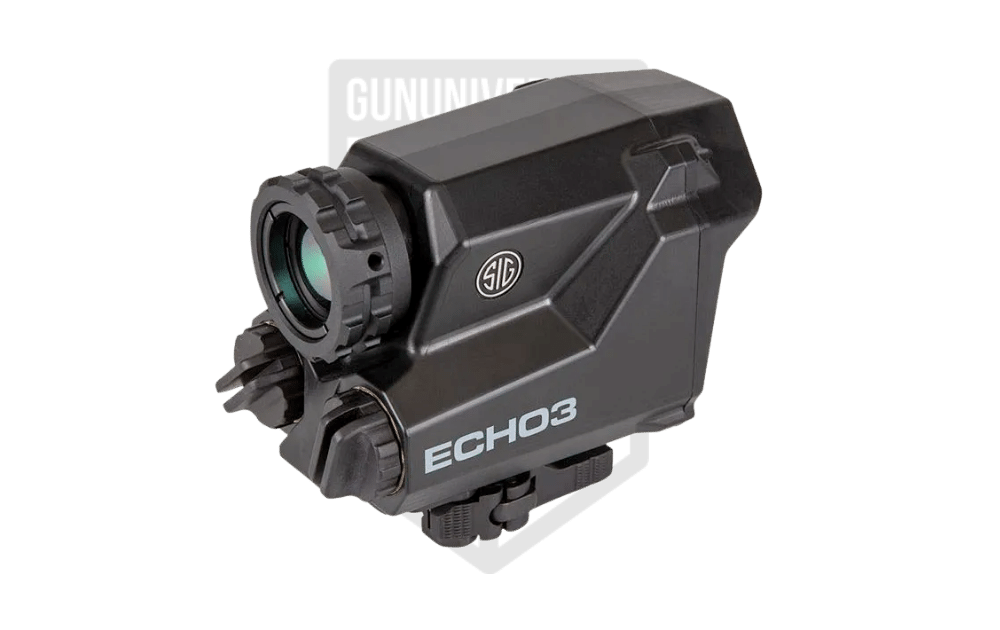
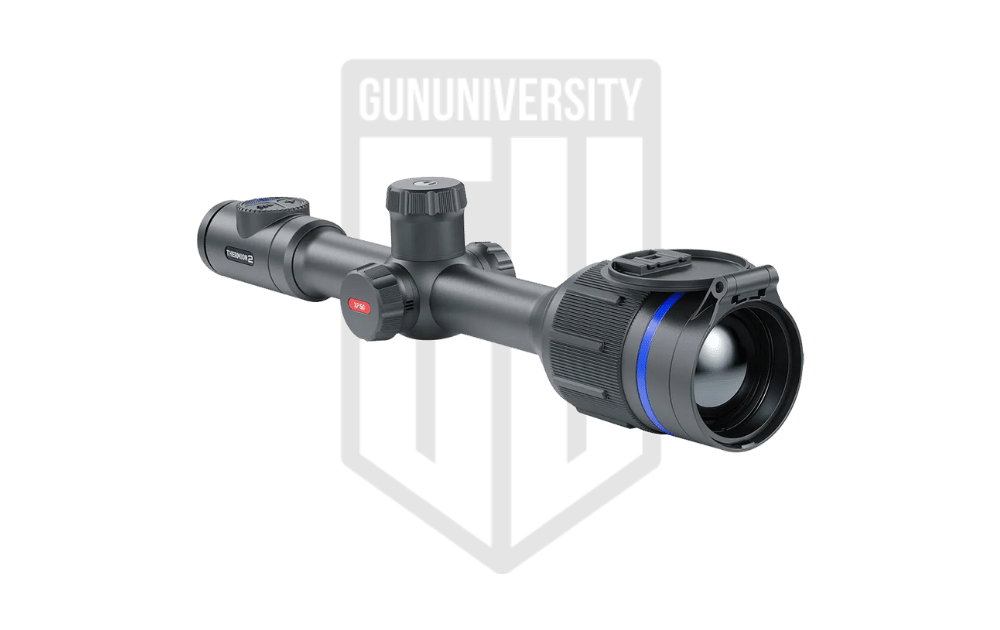
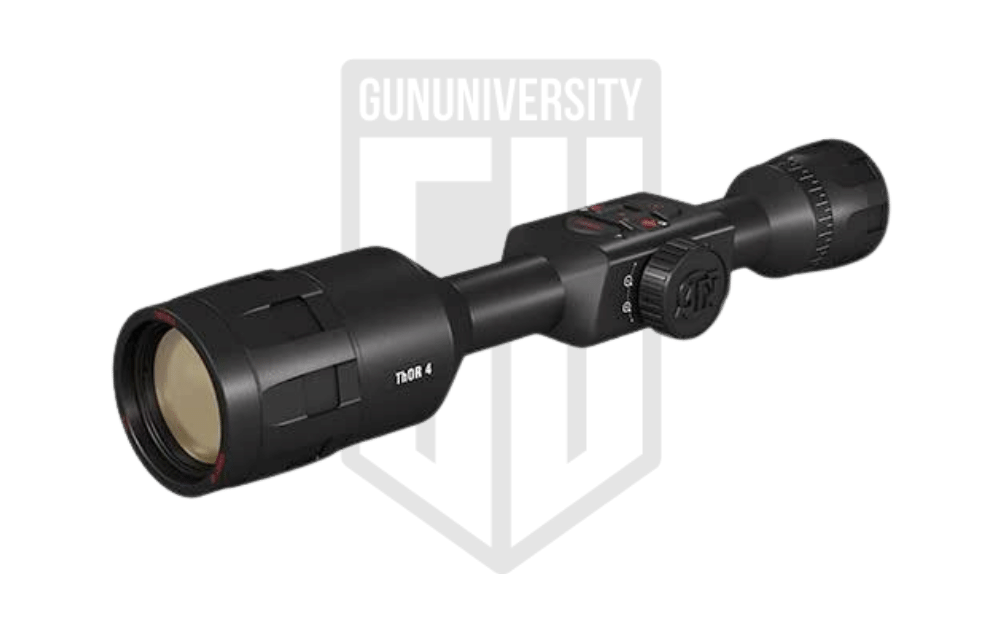
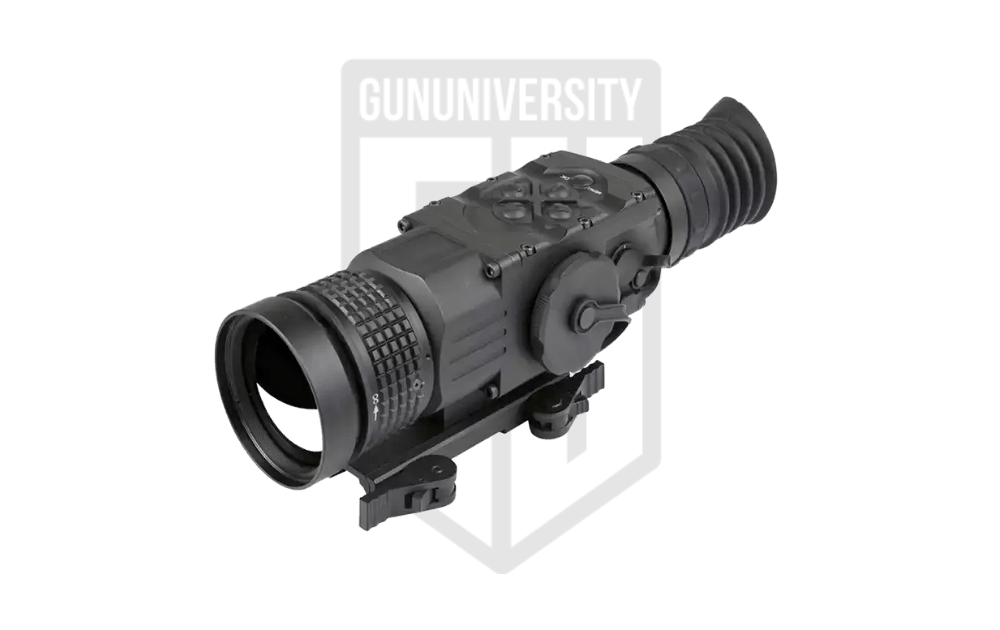
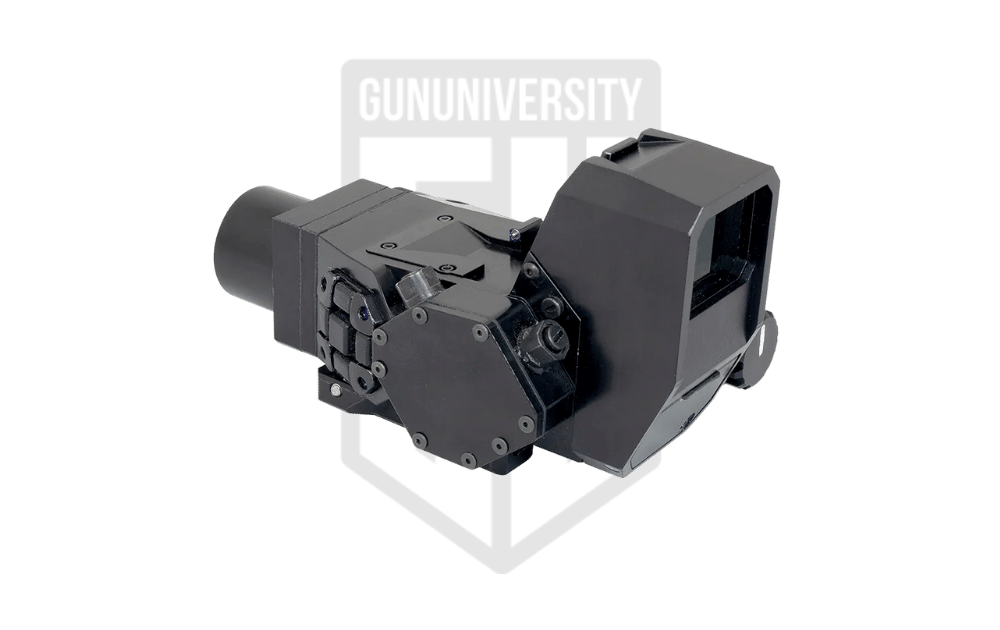
![AK versus AR [East Meets West]](https://gununiversity.com/wp-content/uploads/2022/06/AR-vs-AK-Featured.png)
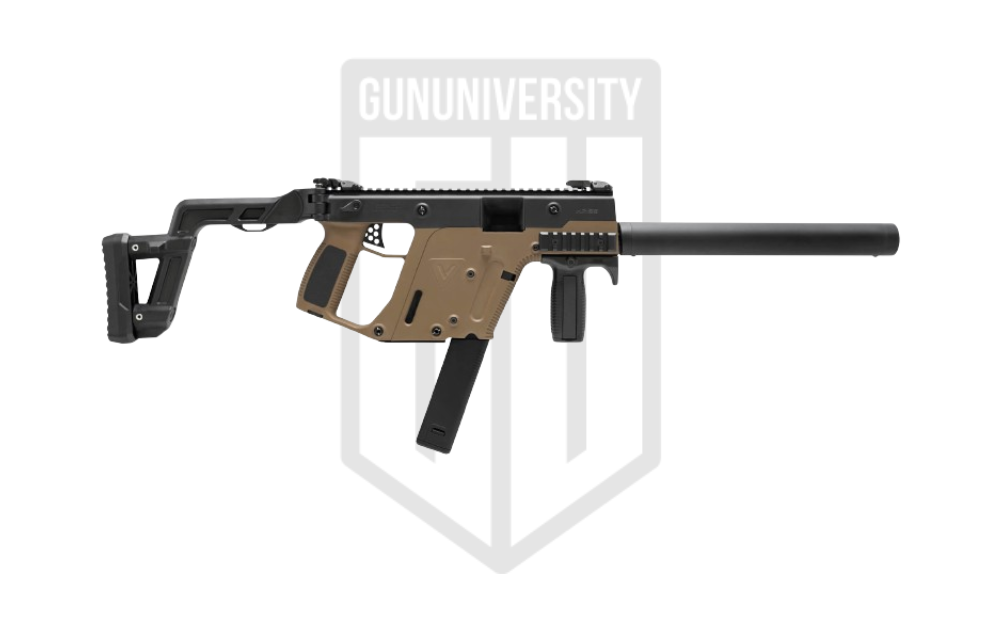


I lost faith in this article when it said the Thor 4 was anything other than trash! I have been hunting with a tournament team for a few years and I keep getting stuck with the Thor 4. While they are looking at animals saying what the animal is I see a pixel that could be anything. I thought I saw a big boar across a field one night and put a stalk on it only to find it was an armadillo close to me. I have told the guy who gets our equipment to send it in & get an upgrade but they keep sending back the exact same model and so far all 5 of them are useless junk.